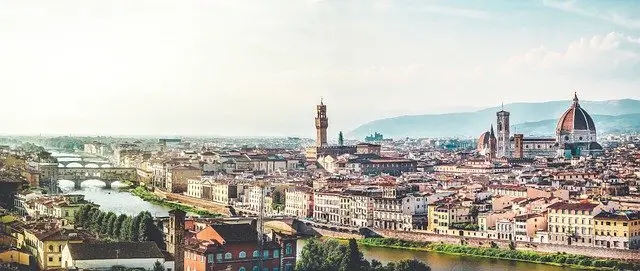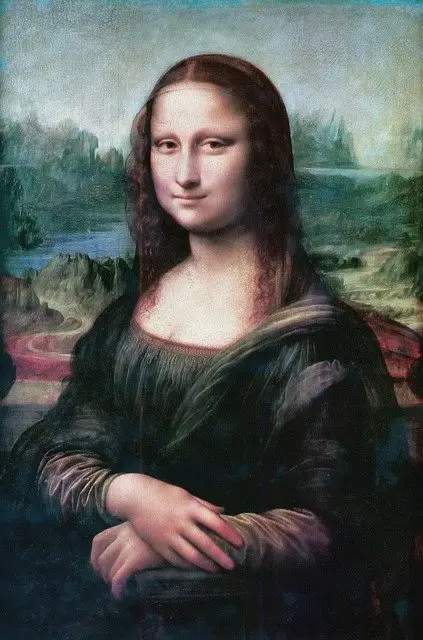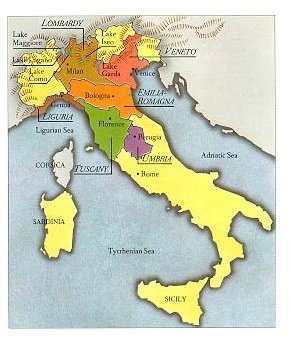Why is Italy Birthplace of the Renaissance?
Italy, Birthplace of the Renaissance
The Renaissance (~1350-1600) was marked by a return to classical ideas and culture. Artists, scientists, and scholars began to look back at the attainments of Ancient Greece and Ancient Rome, study the classical texts, and create their own accomplishments using this knowledge. [caption id=“attachment_130756” align=“aligncenter” width=“640”] Florence was a major power center for the Renaissance[/caption] Modern science, critical thinking, and the artistic method, perspective, all developed during the Renaissance. This “rebirth” of classical culture and values was spurred, strangely enough, by The Crusades. An effort by Christian governments to regain the Holy Land from the Muslims, the Crusades took Europeans to Byzantium which had retained much of the learning and culture of the Roman Empire. Texts believed to be lost or destroyed were brought to Europe and translated, creating a thirst for knowledge and a foundation to grow from.
Florence was a major power center for the Renaissance[/caption] Modern science, critical thinking, and the artistic method, perspective, all developed during the Renaissance. This “rebirth” of classical culture and values was spurred, strangely enough, by The Crusades. An effort by Christian governments to regain the Holy Land from the Muslims, the Crusades took Europeans to Byzantium which had retained much of the learning and culture of the Roman Empire. Texts believed to be lost or destroyed were brought to Europe and translated, creating a thirst for knowledge and a foundation to grow from.
The Power of Money
It was in a handful of Northern Italian city states that the Renaissance emerged. It would eventually spread to northern Europe but it was in Italy that the rebirth truly began. Why? A simple, practical explanation to the question, “Why did the Renaissance start in Italy?” is money. Independent city states such as Florence, Venice, and Rome grew wealthy through trade and banking creating a class of affluent businessmen. These men became patrons to individual artists providing them with the funds, residences, and other necessities so that they might focus on using their talents to create paintings, sculpture, literature, and beautiful feats of architecture. Perhaps the most famous of these patrons are the Medici, a prosperous Florentine banking family. Medici family members supported significant Renaissance artists and turned their city into a quintessential example of Renaissance art, architecture, and ideals. Another answer is that Italians saw themselves as descendants of the Roman Empire and its achievements. As much, it was natural they should renew Roman culture with a return to philosophy, literature, and art. Remember, Italians lived amongst the ruins of the once great empire and were continuously reminded of the triumphs of classical Rome. Further, the wealthy classes in the northern Italian city states collected classical manuscripts. Studied by scholars, the ideas in these texts highlighted human interests and goals. This contrasted with the perspective of the Middle Ages which had focused on fulfillment and meaning through the afterlife. Humanism, as this outlook came to be called, spurred the academic fields of literature, history, philosophy, rhetoric, and others. [caption id=“attachment_130758” align=“aligncenter” width=“423”] The Mona Lisa was painted during the Renaissance[/caption] It also embraced the notion of a person becoming adept and knowledgeable in many areas, or a “Renaissance Man”; someone who becomes expert in a variety of subjects or skills. Take da Vinci; he painted the Mona Lisa, studied anatomy, and designed what could be called the first airplane. Italy birthplace of the Renaissance - A combination of factors allowed the Renaissance to take hold in this culturally and historically significant country. Funding, heritage, and a shift in world view commingled and made the city states of northern Italy the birthplace of the Renaissance. Image by Openpics from Pixabay Image by Welcome to all and thank you for your visit ! ツ from Pixabay
The Mona Lisa was painted during the Renaissance[/caption] It also embraced the notion of a person becoming adept and knowledgeable in many areas, or a “Renaissance Man”; someone who becomes expert in a variety of subjects or skills. Take da Vinci; he painted the Mona Lisa, studied anatomy, and designed what could be called the first airplane. Italy birthplace of the Renaissance - A combination of factors allowed the Renaissance to take hold in this culturally and historically significant country. Funding, heritage, and a shift in world view commingled and made the city states of northern Italy the birthplace of the Renaissance. Image by Openpics from Pixabay Image by Welcome to all and thank you for your visit ! ツ from Pixabay
